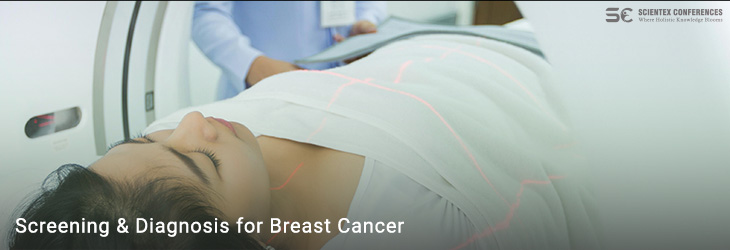Track: Screening & Diagnosis for Cancer

Early detection significantly increases the chances of successful treatment and improves patient outcomes. Attendees will explore various screening methods used to detect cancer before symptoms appear, as well as diagnostic tools employed to confirm a cancer diagnosis, determine its type and stage, and guide treatment decisions. With advancements in technology, cancer screening and diagnosis are becoming more accurate, personalized, and efficient, leading to better prognosis and survival rates.
Understanding Cancer Screening
Cancer screening is the process of identifying potential cancer in individuals who do not show any symptoms. The goal is to detect the disease at an early stage, often before it causes significant harm or cancer symptoms. Common screening methods include mammograms for breast cancer, colonoscopies for colorectal cancer, and Pap smears for cervical cancer.
Key Diagnostic Tools for Cancer
Once cancer is suspected, various diagnostic tools help confirm the diagnosis and assess the stage of the disease. These tools include imaging techniques such as CT scans, MRIs, and PET scans. Imaging helps visualize tumors, determine their size, and check for metastasis (spread). Additionally, biopsies (taking tissue samples) are used to confirm the presence of cancer at the cellular level. This diagnostic step is crucial for determining the cancer type and planning appropriate treatment.
Importance of Early Detection
Early detection of cancer through screening is critical for improving cancer treatment outcomes. Identifying cancer in its early stages allows for less invasive treatments, higher chances of successful surgery, and the ability to prevent cancer from spreading. For example, early detection of colorectal cancer can lead to the removal of polyps before they turn cancerous, while early breast cancer detection through mammograms often leads to less aggressive treatments.
Screening Guidelines and Risk Factors
Cancer screening guidelines vary based on age, gender, family history, and personal health risks. It’s essential to follow these guidelines to identify individuals at higher risk who would benefit from early screening. For example, women at average risk should begin mammograms at age 40, while individuals with a family history of colorectal cancer may need colonoscopies earlier than the general population.
Advances in Cancer Diagnosis: New Technologies
Recent advancements in cancer diagnosis, such as genetic testing, liquid biopsy, and artificial intelligence (AI), are revolutionizing the field. Genetic testing helps identify individuals with inherited mutations that increase the risk of certain cancers, enabling preventive measures. Liquid biopsies, which analyze blood samples for cancer-related genetic material, are providing a non-invasive alternative to traditional biopsies.
Scientific Highlights
- Cancer Research
- Cancer Symptoms and Causes
- Types of Cancer
- Screening & Diagnosis for Cancer
- Cancer Biology and Genetics
- Therapies for Cancer Treatment
- Cancer and Oncology Nursing
- Cancer - Clinical trials
- Breast Cancer and Treatments
- HER2-Positive Breast Cancer
- Breast Cancer Surgery
- Radiology and Oncology
- Oncology Nursing & Patient Care Models
- COVID-19 Impact on Cancer
- Advances in Breast Cancer Immunotherapy
- Liquid Biopsies in Early Cancer Detection
- Robotic-Assisted Breast Cancer Surgery
- Advanced Cancer Therapy
- Genomics and Cancer Biomarkers


